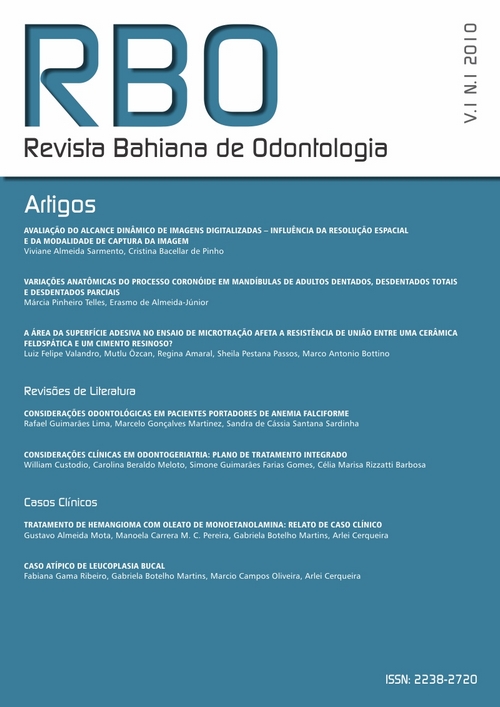L'adhésif de la surface d'essai sur microtension affecte la résistance de l'Union entre une céramique feldspathique et le ciment en résine?
DOI:
https://doi.org/10.17267/2596-3368dentistry.v1i1.3Keywords:
Tensile bond strength, Ceramic, CementAbstract
Purpose: To evaluate the effect of the bonded surface area on the bond strength of a resin cement to a glass ceramic. Methods: Surfaces of 12 glass ceramic blocks (6x6x4mm3) were conditioned with 10% hydrofluoric acid and silanizated. The conditioned blocks were placed inside a silicone mold and the dual-cure resin cement was applied on the treated surface. Specimens were stored sectioned for obtaining samples with different bonded surface areas: Gr1 - 0.7mm x 0.7mm (0.5mm²), Gr2 - 1mm x 1mm (1mm²), Gr3 - 1.4mm x 1.4mm (2mm²). The non-trimmed beam samples were submitted to the microtensile bond strength test in a universal testing machine (cross-head speed: 1 mm/min). Data were statistically analyzed (ANOVA and Tukey’s test;? Pearson Correlation test). Results: The microtensile bond strength results were significantly affected by the bonded surface area (p<.0001). The highest bond strength (MPa) was of the Gr1 (26.3±8.2a), followed by Gr2 (20.8±6.5b) and Gr3 (16.1±5.7c). The Pearson correlation test revealed that there is an inverse correlation between bonded surface area and microtensile bond strength results (r=-0.5234; p<0.0001). Conclusion: The lowest bonded surface areas provided the highest values of bond strength.Downloads
Download data is not yet available.
Downloads
Published
2018-06-29
Issue
Section
Original Articles
How to Cite
L’adhésif de la surface d’essai sur microtension affecte la résistance de l’Union entre une céramique feldspathique et le ciment en résine?. (2018). Journal of Dentistry & Public Health (inactive Archive Only), 1(1). https://doi.org/10.17267/2596-3368dentistry.v1i1.3



